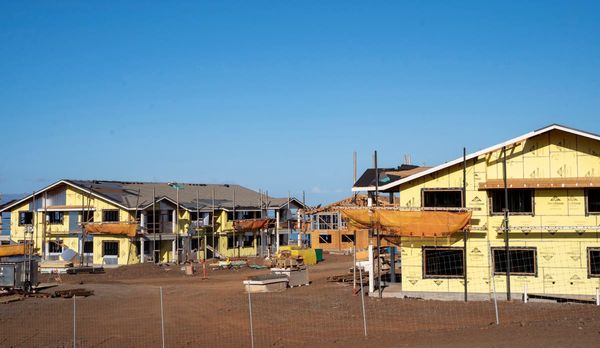
The National Science Foundation will examine the environmental impacts of a proposed optical telescope on the summit of Hawaii’s tallest mountain, a project that has faced strong opposition from Native Hawaiians who consider the area sacred.
Native Hawaiians have long protested the plan to build what would be one of the world’s largest optical telescopes on Mauna Kea, and say the $2.65bn project will further defile an area already harmed by a dozen other observatories.
The National Science Foundation on Tuesday published a notice of its plans to prepare an environmental impact statement for the $2.65bn Thirty Meter telescope, along with another proposed telescope on Spain’s Canary Islands. It will host several meetings on the Big Island of Hawaii in August and said only after it considers public input, the environmental review and the project’s technical readiness, will it decide whether to fund the project.
The international consortium of scientists behind the effort, the TMT International Observatory (TIO), have been moving forward with plans to build the telescope on Mauna Kea for more than a decade and in 2010 completed an environmental study required by Hawaii law for construction on the summit. TIO has proposed constructing the telescope on the Spanish island of La Palma off Africa’s western coast if it cannot build in Hawaii.

The latest study is required under US law in order for the National Science Foundation to invest in the project. TIO, a partnership between the California Institute of Technology, the University of California and government-backed research institutions in Canada, China, India and Japan, plans to obtain $800m, 30% of the estimated cost of construction, from the US government, according to a report.
Government funding will allow the entire US astronomy community to access the observatory, Robert P Kirshner, TIO’s executive director, said in a statement.
“This ensures that the TIO tests the best ideas and does the most important observations to contribute to understanding where we are in the universe and how it works,” he said.
Supporters of the project have argued it will bring jobs and educational opportunities to the area, including via scholarships for Hawaii Island students.
Native Hawaiians who have faced arrest and charges for protesting the project say the sacred site should not be further desecrated. “For Native Hawaiians, there is a question of our right to self-determination as defined by international law, but I think it’s so much bigger than that,” Kealoha Pisciotta, a spokesperson for Mauna Kea Hui and Mauna Kea Aina Hou groups, which oppose the project, previously told the Guardian. “It’s about us learning to live and be interdependent.”

Pisciotta was critical of the new study, which she said will force opponents to again take time away from their lives to give their views.
“Why don’t people accept our ‘no’ for the answer?” Pisciotta said.
In a report issued last year, the US astronomy community said the National Science Foundation should invest in at least one or two of a new class of observatories called Extremely Large Telescopes planned by American institutions. The project proposed in Hawaii would cover the skies from the northern hemisphere, while the Giant Magellan Telescope project, based in Chile, would observe the universe from the southern hemisphere.
The report deemed the success of the projects critical due to their “transformative scientific potential” and argued that having at least one was “absolutely essential” for the US to remain a leader in ground-based astronomy.
The University of Hawaii and the US government began using Mauna Kea for astronomy purposes in the 1970s as its frequent clear nights, dry atmosphere and dark skies make it one of the world’s best locations to observe deep space.







